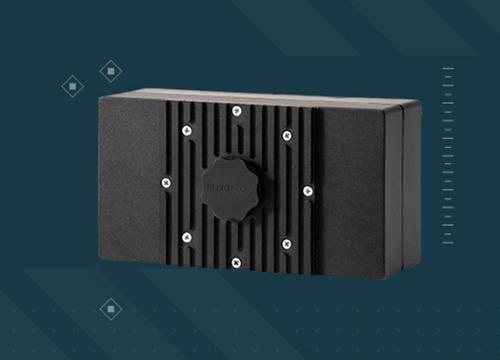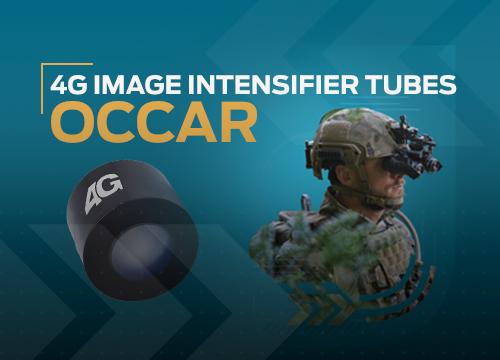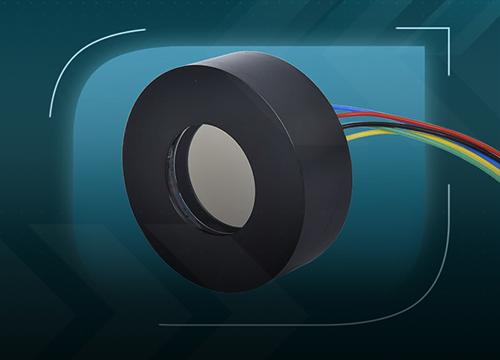
Apr 09th 2024
Innovative Photon Detection
Exosens Adds Innovative Photon Counting System, LINCam, to its Portfolio of Single Photon Sensitive Detectors

Apr 09th 2024
Exosens Adds Innovative Photon Counting System, LINCam, to its Portfolio of Single Photon Sensitive Detectors
Why would you use a midwave camera vs a longwave camera?
There are many considerations when choosing the operating waveband of a thermal infrared camera.
An important parameter to consider is the estimated temperature range of the object to be measured. The Planck emission curve dictates that solid objects over approximately 150 °C will have their maximum emission in the midwave region of the IR spectrum, with fainter signal in the LW. Conversaly, solid objects closer to room temperature will almost exclusively emit in the longwave region of the IR spectrum, with only faint emissions in the MW region. Nevertheless, a MW camera can still be used for measuring an object close to room temperature with an appropriate exposure time. And in the same way, a LW camera can still be used to measure hot solid targets.
Care must also be given to the spectral requirements of the envisioned application. Objects under measurement can feature varying spectral emission and absorption behaviours (referred to as signature) that can be better matched with a camera’s spectral range. Combustion, for example, shows varying signal across the MW spectral range, and minerals can have varying signature in the LW that can help in distinguishing them. Prior knowledge of the spectral signatures of the target material of interest is essential when choosing the spectral range of an infrared imager.
In general, LW cameras feature a larger dynamic range and are better suited for experiments that involve a large temperature range. They are also well suited for low-smear measurement of fast-moving objects that require shorter exposure time.
Contact a Telops expert if you need help when choosing your infrared camera to make sure it is well-suited for your application.
How does Telops blackbody-free permanent radiometric calibration work?
Typically, infrared cameras are factory-calibrated using high-precision blackbody reference sources to implement a non-uniformity correction (NUC) for improved image quality and a radiometric calibration to relate observed detector response (digital counts) to blackbody temperature for a single exposure time. If the experiment requires temperature measurements at other exposure time values additional calibration data sets must be acquired, a time-consuming and tedious process.
The Telops proprietary permanent radiometric calibration operates its magic by measuring the electron flux generated by the detector (obtained from dividing digital counts by the exposure time) as a function of a blackbody temperature filling the camera’s Field Of View. The flux generated by the detector is independent of the exposure time and as such, this calibration strategy supports a wide range of operating parameters without the need for sporadic or periodic recalibration. All Telops high-speed broadband and multispectral imagers are delivered with this permanent calibration fully implemented and are ready to use from power-on.
With this technique, a Telops camera is permanently calibrated:
- For the whole range of the camera operating temperature;
- For the whole range of target temperature, from – 40 °C to + 2 500 °C;
- For the whole range of exposure time, continuously and without gaps.
This unique calibration allows the user to operate the IR camera with Automatic Exposure Control (AEC). The camera self-adjusts the exposure time of all pixels simultaneously, in real time, to always maximize the signal to noise ratio, without reaching saturation.
Does a thermal camera measure the true temperature of an object?
A thermal infrared camera measures a quantity called radiometric temperature by interpreting the infrared radiation emitted from the surface of objects within the scene. Each object is modeled as a blackbody with a unitary, spectrally flat emissivity profile that emits radiation only according to its temperature. Real objects do not have a unitary emissivity value and in fact, most materials have spectrally varying emissivity profiles. Additionally, the thermal radiation from objects within the scene entering the camera is modified by the transmission properties of the intervening atmosphere. In order to convert the radiometric temperature measured by an infrared camera to the true thermodynamic temperature of an object, it is necessary to compensate for both the true material emissivity and atmospheric transmission properties.
For this purpose, Telops provides a user-friendly compensation toolbox as part of its standard software suite.

Mar 13th 2024
Photonis Channeltron® Electron Multipliers Soar into the Alaskan Aurora on NASA’s Dissipation Mission.

Feb 06th 2024
Photonis shall deliver 40,000 image intensifier tubes to boost military night vision in Germany and Belgium

Jan 18th 2024
Exosens is proud to announce the expansion of its Photonis Ultimate Detection Scientific Imaging product portfolio with the introduction of the 25 mm Image Intensifier solution.
How can a user control the mechanical shutter to assure the image?
Within LWIR cameras, it is a factory default, the shutter is initialized when the temperature at the detector changes by 0.5°C. An additional timing elapse function is also implemented and can also be activated. When a camera has just been started it will get to his working temperature. During this time the detector will warm-up and will be shuttered several times to assure the quality of the image.
What is a shutter in a camera?
A shutter is a part within a camera that controls the light exposure that reaches the sensor. There are two main shutters, namely mechanical shutter and electronic shutter. The mechanical shutter is physical curtain of the camera that open and close to expose the sensor. While the electronic shutter works by turning the sensor's sensitivity on and off for specific durations.

Nov 29th 2023
Exosens signs partnership with Scientific Imaging Inc. to distribute its wide range of high-performance cameras
Stay connected
Stay informed and connected to the latest news from Exosens by signing up.